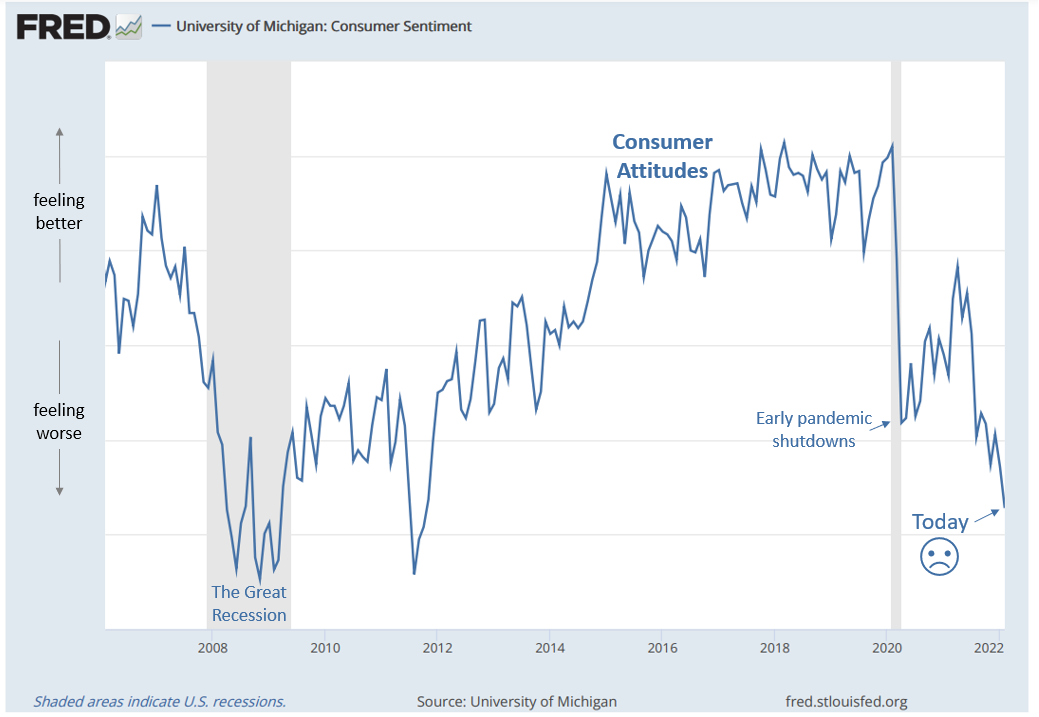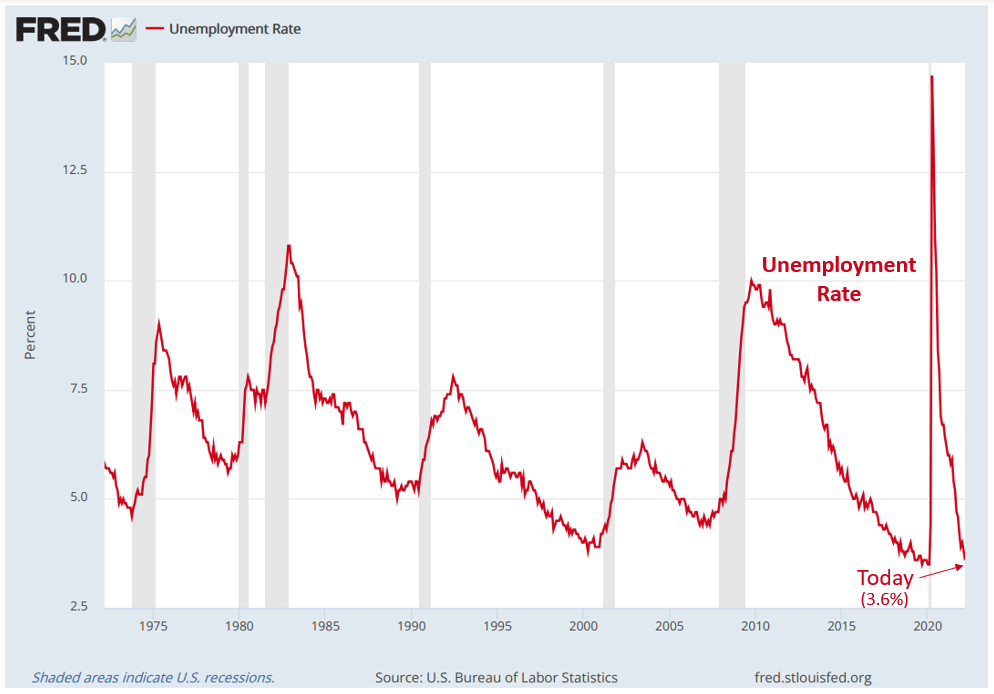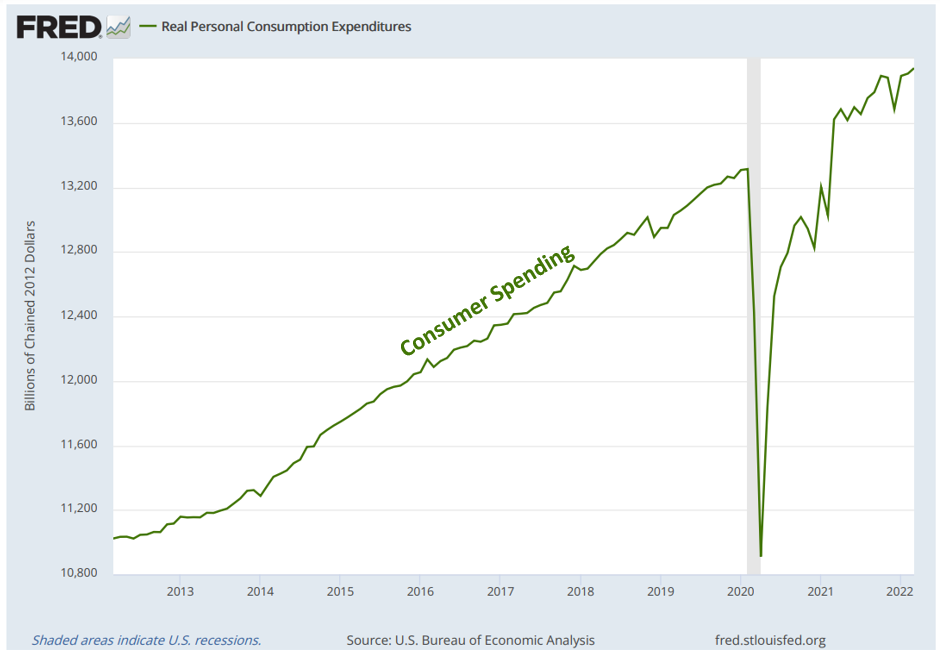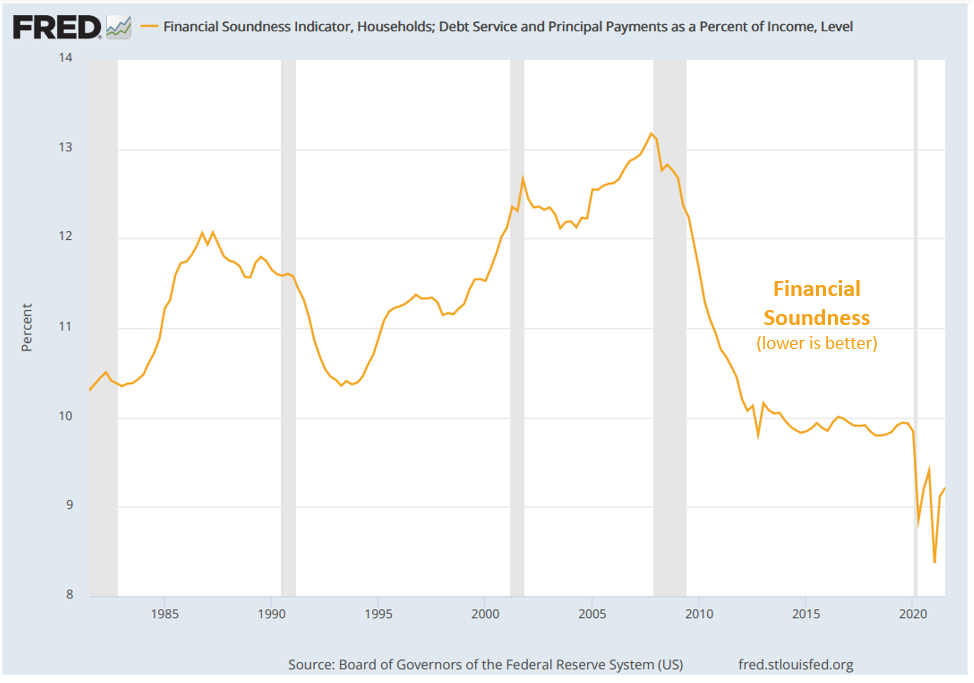Pessimism is still the popular opinion regarding our economy today, but there are real reasons to look up.
-
Consumers continue to report negative feelings about the current economy.
-
Significant signs of economic strength exist that shouldn’t be overlooked.
-
The future is hard to know, but perception doesn’t have to become reality.
Consumers are feeling down. What’s the story?
People feel poorly about our current economic conditions today. The chart below shows a measure of consumer opinions regarding the overall health of the economy.
The blue line shows that feelings about the economy tanked at the start of the pandemic and have never recovered. Perceptions of economic conditions today remain at the lowest level in ten years.
While perception isn’t always a true reflection of reality, it is an important consideration when trying to better understand the economy.
When attitudes turn negative, we sometimes fear that consumers might be pulling back on spending. This is scary because less spending means less economic activity, which can lead to a downturn—a fate that we’d like to avoid.
So, what’s with the bad attitudes right now?
Consumer psychology is tricky because there are so many factors that influence perception. But two trends affecting consumers today might help explain. Both relate to the broken global supply chain.
The first is the limited availability of certain goods due to ongoing shortages. When people go to buy a new bicycle or laptop and they see empty shelves, it sends a message to them that the economy isn’t working as it should be. Consumers worry.
The second trend is widespread inflation. Shortages for both goods and inputs have led to widespread price increases across the economy. When people go to the grocery store or the gas station and pay noticeably higher prices, it sends a message that something isn’t right. The worry continues.
These trends are scary and uncomfortable for all of us. They do major harm to our perceptions of the economy, and understandably so. But there are many other factors that determine our actual economic reality, and some tell us a different story.
The economy shows signs of strength that shouldn’t be overlooked.
Contrary to popular opinion, our economic reality today is not entirely doom and gloom. There are several key areas of strength that should be highlighted to provide context to consumer doubts.
The first is a robust job market. The chart below shows the unemployment rate over the past 50 years.
The red line indicates that unemployment is near record lows. This means that it’s almost never been easier to find a job for those that want one. Jobs mean income, which is typically good.
And with people back to earning, they’re back to spending too. The chart below shows consumer spending adjusted for inflation, which puts past price levels in real context for comparing over time.
As the green line shows, consumer spending is strong despite people’s opinions about the economy today. This is important, as consumer spending typically makes up two-thirds of all economic activity.
Higher spending has some people wondering about financial stability—are people relying too heavily on loans and credit cards that they’ll struggle to pay back in the future? The short answer is no.
The chart below shows household debt payments as a percentage of income. The Fed uses this as a measure financial soundness. The lower the ratio, the better positioned people are to manage their debt.
As the orange line shows, household finances are historically sound. This is largely due to the tremendous savings accumulated recently. As the last economo post on the housing market shared, research suggests over $2.5 trillion in excess savings were amassed since the start of the pandemic.
So contrary to popular opinion, there’s more to the story than just doom and gloom.
Perception doesn’t have to become the reality.
What’s all this mean for our future? That’s hard to know. What we can say is there’s no shortage of factors to keep track of as we seek to understand today’s economy.
Consumer sentiment is certainly an important one because it helps us understand how buyers might feel making decisions about spending.
But we’ve just shown that feelings about the economy have been negative for years and spending continues to be strong and resilient, as do other factors. Maybe attitude isn’t everything.
The bottom line? There’s no crystal ball for the economy. Perception matters but other factors need to be considered if we want to better understand the entire picture.
Stay tuned, more to come.





